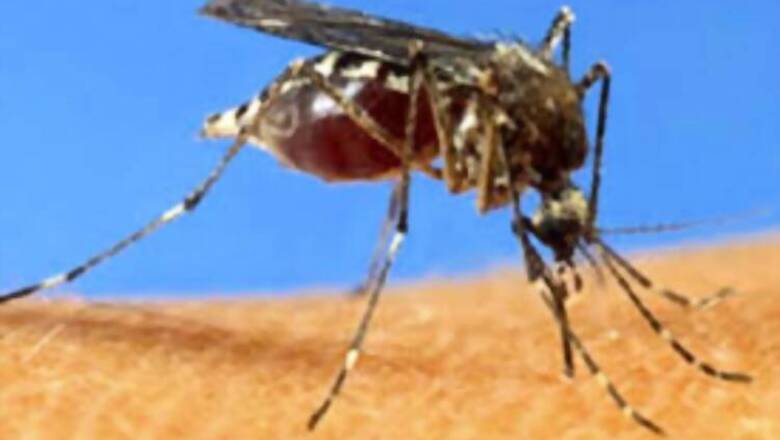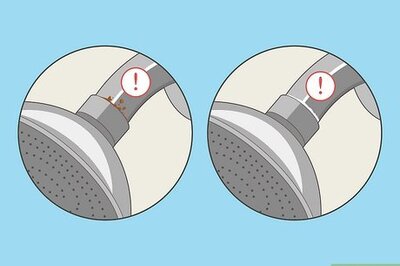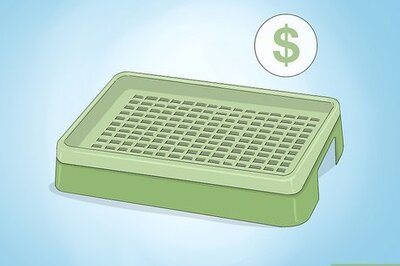
views
by Dr KK Aggarwal
New Delhi: India is believed to be the Dengue capital of the world with the most recorded cases of the disease. The monsoon season further increases its incidence owing to the innumerable potholes where water gets collected. This stagnant water acts as ideal breeding grounds for the Aedes mosquitoes, the vector responsible for spreading the illness. According to a recent report, over 58 lakh Indians are diagnosed with Dengue each year, a figure 282 times greater than the officially recorded number of 20,000 annual cases.
However, what most people are not aware of is that most dengue cases are preventable and manageable. Given this fact, it is extremely essential to educate the masses about its treatment, prevention and myths. The risk of complications is in less than 1% of dengue cases and if the public knows warning signals, all deaths from dengue can be avoided.
The typical symptoms of dengue are fever, vomiting, headache, nausea, pain behind the eyes and severe joint and muscle pain. Most dengue virus infections in adults are symptomatic (86%) and in children under the age of 15 years are asymptomatic or minimally symptomatic. Classic dengue fever is an acute febrile illness accompanied by a headache, retro-orbital pain, and marked muscle and joint pains. Symptoms typically develop between 4 and seven days after the bite of an infected mosquito. The incubation period may range from 3 to 14 days. Fever typically lasts for five to seven days. The febrile period may also be followed by a period of marked fatigue that can last for days to weeks, especially in adults. Joint pain, body aches, and rash are more common in females.
Because a virus causes dengue fever, there is no specific medicine or antibiotic to treat it. For typical dengue fever, the treatment is directed toward relief of the symptoms. The acute phase of the illness with fever and myalgias lasts about one to two weeks.
In dengue, most complications occur within two days of the fever subsiding and most people are casual during this period. Any abdominal pain, giddiness or weakness after the fever has subsided should be attended to, by a doctor. Dengue complications during this period are due to a shift of blood volume and patient requires a rapid infusion of oral or intravenous fluids in large quantities.
Most complications of dengue occur after the fever is over. The two days after the last episode of the fever are crucial and during this period, a patient should be encouraged to take plenty of oral fluids mixed with salt and sugar. The main complication is leakage of capillaries and collection of blood outside the blood channels leading to intravascular dehydration. Giving fluids orally or by intravenous routes, if given at a proper time, can save fatal complications.
Physicians should remember the ‘Formula of 20’ i.e. rise in pulse by more than 20; fall of BP by more than 20; difference between lower and upper BP less than 20 and presence of more than 20 hemorrhagic spots on the arm after a tourniquet test suggest a high-risk situation and the person needs immediate medical attention.
If a person has suffered from dengue in the past year, they must take additional precautions to prevent the disease because a second attack of dengue may be more dangerous than the first attack. There are four different types of dengue, and one can, therefore, suffer from dengue four times in his or her lifetime. The second or subsequent dengue infections tend to be more serious. A person with dengue can also simultaneously suffer from malaria. Malaria and dengue together can lower platelet counts to a dangerous level leading to complications. One must however always remember that platelet transfusion in dengue patients can cause more harm than good and must only be administered if a person’s platelet count is less than 10,000, and he has active bleeding.
It is a myth that all dengue patients require platelet transfusion. In fact unnecessary transfusion causes more harm and puts the patient at risk of complications such as sepsis, transfusion-related acute lung injury (TRALI), transfusion-associated circulatory overload (TACO), alloimmunization and allergic and anaphylactic transfusion reactions.
Other risks of platelet transfusion include febrile non-hemolytic transfusion reactions (FNHTR), transfusion-associated graft-versus-host disease (ta-GVHD), and post-transfusion purpura (PTP). The primary cause of death in patients suffering from dengue is capillary leakage, which causes blood deficiency in the intravascular compartment, leading to multi-organ failure. At the first instance of plasma leakage from the intravascular compartment to the extravascular compartment, fluid replacement amounting to 20 ml per kg body weight per hour must be administered. This must be continued till the difference between the upper, and lower blood pressure is over 40 mmHg or the patient passes adequate urine. This is all that is required to treat the patient. Giving unnecessary platelet transfusion can make the patient more unwell.
It is always said that prevention is better than cure, and it applies to the case of dengue as well. What most people must remember while taking necessary precautions is that dengue mosquitos only bite during the day and breed in clean, fresh water. Often people remain unaware of these facts and protect themselves from bites during the nights by using mosquito nets and repellent creams. They also feel that they are the safest when in clean urban environments, not realizing that mosquitos could be breeding in the clean water filled bucket kept in their backyard.
The dengue mosquito lays its eggs on the walls of water-filled containers in the house and patio. The eggs after they hatch can survive for months. Female mosquitoes lay dozens of eggs up to 5 times during their lifetime. The life cycle of the mosquito from egg to larvae, pupae, and to an adult mosquito is about eight days and occurs in water. Adult mosquitoes live for about one month and rest indoors in dark areas (closets, under beds, behind curtains). It is only the female mosquitoes, which bite humans.
The dengue mosquito can fly several hundred yards looking for water-filled containers to lay their eggs. A few mosquitoes per household can produce large dengue outbreaks. The dengue mosquito does not lay eggs in ditches, drainages, canals, wetlands, rivers or lakes; pouring chlorine into these habitats is useless. Chlorine is harmful to aquatic life.
Remaining in well–screened or air–conditioned buildings during the day can reduce the risk of exposure. When outside during the day, one should wear clothing that reduces the amount of exposed skin and use an effective mosquito repellent, such as N, N–diethyl–metatoluamide (DEET). Checking the accumulation of clean water in and around the house, in flowerpots, dog bowls; water tanks and buckets can go a long way in preventing the mosquito from breeding.
(Author Dr K K Aggarwal is a Padma Shri Awardee and Honorary Secretary General of Indian Medical Association)



















Comments
0 comment